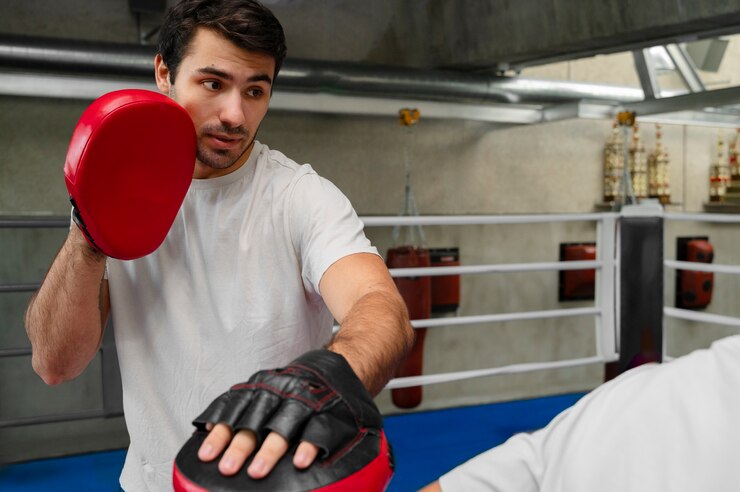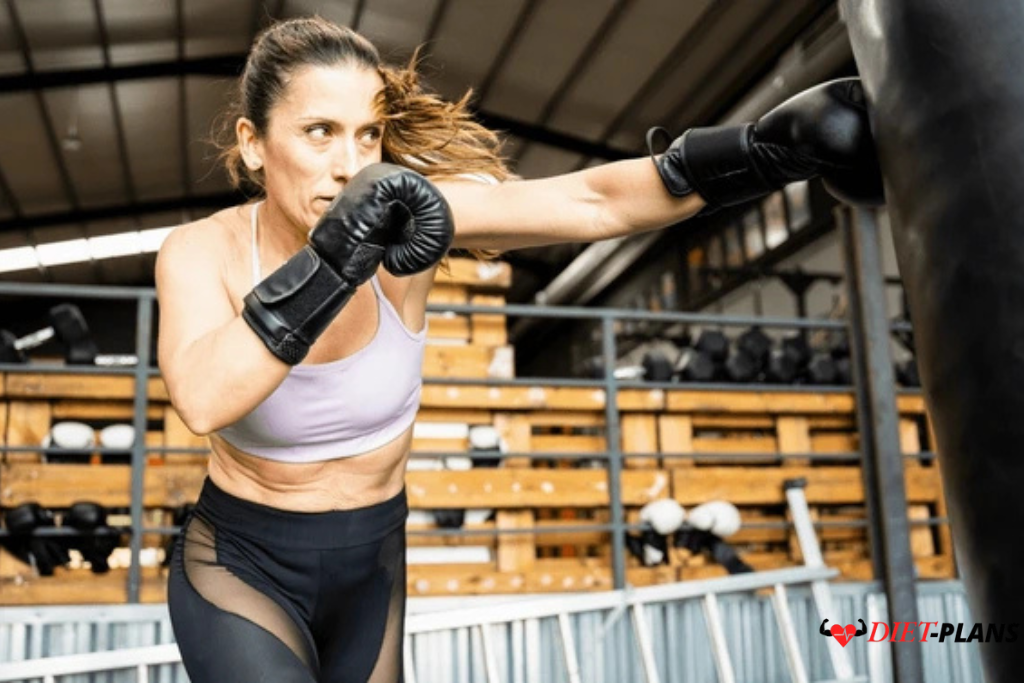I Shed Half a Stone When I Began Boxing Three Evenings a Week
There isn’t a better exercise than boxing, but how would a middle-aged lady fare in the competitive world of boxing gyms?
When I enter the gym for the first time at 7:15 a.m., I experience a severe sensory overload. The air is downright intoxicating with an odd combination of perspiration, deodorant, and leather that is the first thing I’ve ever smelled. Then comes the sound of “thump, thump, thump,” which is followed by sharp breath exhalations and groans.
As I turn to look around, I see a lot of muscular people moving around punch bags that are bright red and hanging from the ceiling. Others are circling one another in two boxing rings, while others are jogging on running machines.
Making an appearance as a lady in her 50s is daunting.
I only need to keep in mind why I’m here; I’m resolved not to flee. I wondered whether I could do the same after seeing my daughter’s boyfriend, Toby, dramatically change his physique in a couple of months by learning to box. Because of boxing, Toby had more defined limbs, shed extra fat around his belly, and was able to walk higher.
Even though I’m more than thirty years his senior, I find the rise in popularity of white-collar boxing fascinating, and I’m always ready for a challenge. In addition, toning my arms and legs and losing that annoying half-stone that has crept on—not to mention the advent of middle-aged back fat—as well as searching for my abs, which vanished in idleness decades ago, are all quite inducing.
Why I Wanted to Become a Boxer
I was aware of Media Fight Night, a yearly occasion in London that invites anybody connected to the media sector. Additionally, the organizers advise competitors to train for a few months at the Fitzroy Lodge boxing club in Lambeth before joining the tournament to gauge their level of interest.

According to John Maloney, the event’s creator and organizer, “It’s a good idea for everyone to come training for a few months to understand the level of commitment that’s required.” Only 16 individuals—those who are best prepared for the event—are finally chosen for the final fight night out of the more than 100 applications we get each year. However, anybody may attend Fitzroy to learn how to box and observe how they progress with the instruction.
Alcohol, red meat, and sugar are the three items that must be given up as part of the training program, and John is immediately clear about this. “If you don’t do this, you just won’t be fit or sharp enough,” he adds. From now on, you must eat three nutritious meals a day while being careful not to consume too many carbs. “You should run, preferably with hill sprints, on three of the days you aren’t training in the boxing gym.”
Even though I’ve been going to regular gyms and jogging regularly, I’m not ready for the three-times-a-week demanding training sessions led by Fitzroy Lodge’s head coach, Mark Reigate, a 51-year-old amateur boxing legend who has competed in over 100 fights during his career and is now committed to using the sport to help others change themselves.
An Example of a Normal Boxing Training Session
The first 20 minutes of a session are spent running on the spot, skipping with a rope (which requires some skill after 40 years without using one), or shadowboxing (executing punch sequences in the air while circling a fictitious opponent). The workout is broken up into “sprints,” in which we gradually reduce the number of marks from 10 while increasing the exercise’s pace and intensity to the maximum. Our heart rates rise as this is performed again, leaving me flushed and out of breath. While we’re doing this, Mark often shouts, “Remember to breathe,” which is very beneficial. Although it may seem apparent, holding one’s breath under stressful situations is a reflex, and remembering to release it guarantees greater endurance.
The boxing portion of the workout follows. Wearing gloves, we begin by practicing with a bag as Mark calls out the punch patterns he wants us to do. For right-handed people, a “double jab” is two jabs delivered quickly after one another, whereas a “jab” is delivered with the left hand and is used to measure distance from an opponent during combat. The “backhand” is a forceful punch delivered with the dominant hand, which is often the right hand for most people. The force travels through the body and up from the legs. Additionally, a “hook” is a side-in punch.
The “roll,” on the other hand, is a ducking motion used primarily to avoid an imagined opponent’s punch. The punching patterns are broken up by periods of just pounding the bag as fast as you can, sometimes for 15 seconds, sometimes for 20, and occasionally for 30. This is taxing.
Mark lets me join other people in the ring where we “body spar” after we’ve been training exclusively with a bag for a few weeks. This entails focusing only on our opponent’s stomach and shoulder, avoiding any head contact, which he only allows after many months of practice.
Why “Exercise” is So Different from Actual Boxing
It surprises me to feel a gloved hand smack me in the stomach during my first body spar. It emphasizes that this is about competing against an opponent in the ring rather than being a typical workout session, which is why I’m momentarily stunned and a bit exhausted.
However, it forces me to concentrate much more on my footwork, shifting constantly to avoid my opponent’s reach, and, with adrenaline coursing through my veins, it also sharpens my reflexes, enabling me to respond faster to punches that are aimed at me and begin to land some of my own.
The last 20 minutes of every training session are not a warm-down; instead, they consist of more running on the spot, punctuated by sets of lunges, squat leaps, push-ups, star jumps, and—fear of horrors—burpees. (If someone were to ask me to explain hell, I would say that it involves burpees since my body, which is in its 50s, finds them quite painful.)

